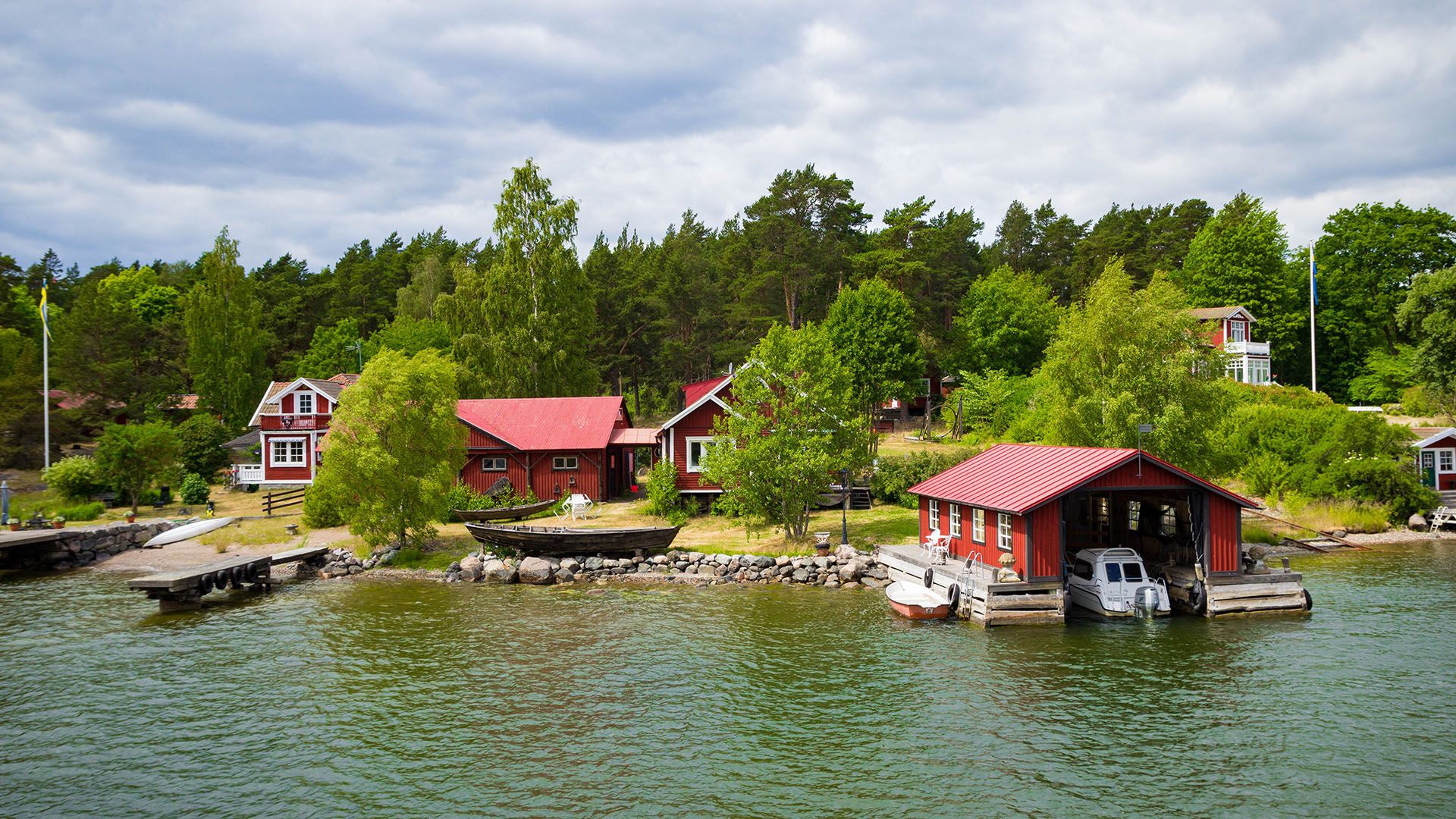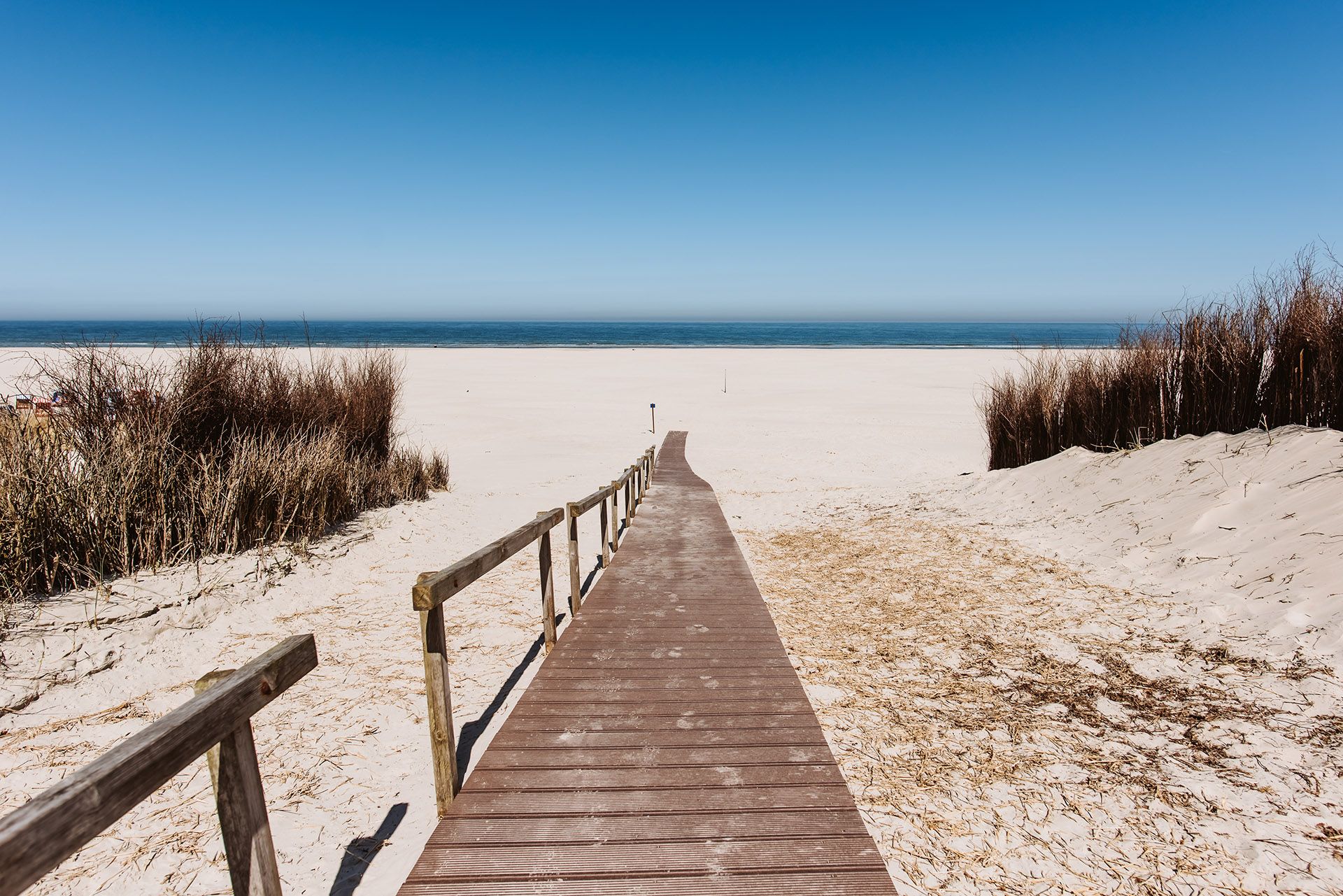Planning your own trip? Prepare for your trip
Use Rough Guides' trusted partners for great rates
Book your individual trip, stress-free with local travel experts
Of the thousands of islands in Stockholm’s archipelago, peaceful little Grinda, less than two hours from the capital, is one of the easiest to reach. A car-free nature reserve, Grinda radiates a carefree, unpretentious allure. Spend a day lazing on sandy beaches, jumping off cliffs or floating in a kayak and you’ll be ready to return to city life again.

Nice Little Houses and Luxury Cottages on Stockholm's archipelago © ROUSSELLE Xavier/Shutterstock
With pristine white-sand beaches, untouched by development and backed by dense forest, the diminutive island of Porquerolles has more than a touch of desert-island remoteness about it. But hop on a boat in Hyères, on France’s Mediterranean coast, and this island paradise is yours to enjoy in the time it takes you to slap on some sunscreen. Beyond the solitary harbourside village stretches a picturesque Mediterranean landscape, heady with the scent of eucalyptus, pine and rosemary.
Dealing with the complexities of your first trip to Europe? Our comprehensive planning guide will simplify the process and ensure you are well-prepared.

Porquerolles island, mediterranean sea, France © andre quinou/Shutterstock
A short hop by ferry or plane from Devon or Cornwall, Tresco is Britain’s largest privately owned island (though luckily, it’s open to all). With no cars, it exudes a nostalgic, buckets-and-spades kind of charm. This is a place for the gentle holiday pursuits of fishing, sailing, hiking and strolling along deserted beaches, and perhaps a visit to Tresco’s biggest sight, the Abbey Garden: an early-flowering blaze of colour that flourishes in the island’s subtropical climate.

Cromwell Castle Tresco and Bryher from King Charles Castle, Isles of Scilly, Cornwall, UK © Neil Duggan/Shutterstock
Until the fifteenth century, when the first Portuguese pitched up, São Miguel was a castaway island, adrift in the volcanic Azores. A few centuries on, the island grew rich from exporting oranges, and furnished its pretty capital, Ponte Delgada, with Baroque churches. These days, this little-known island is hard to beat as a sun-soaked island retreat. Potter round town, flop on unspoilt beaches, go whale-watching or head to the highlands to soak in bubbling volcanic springs.

Crater Sao Miguel, Portugal © OneOfTheseDays83/Shutterstock
Discover undefined's most captivating stories
With little to distract you but the rhythmic crashing of waves and the shifting tides, pint-sized Colonsay, a remote Hebridean outpost of just seventeen square miles, is a calming antidote to twenty-first-century ills. Its sights are low-key – a beach with deserted golden dunes, a ruined priory, and an atmospheric woodland garden. And if you’re feeling energetic, there’s always Colonsay’s “McPhies” (peaks of over 300 feet). There are twenty-two of them, and hardened hill-walkers bag them all in a day.

Beautiful sandy Kiloran Bay Beach on the Hebridean Island of Colonsay, Scotland © Fortimageon/Shutterstock
Peace and quiet are the main draws of Texel (pronounced “Tessel”), off the coast of Noord Holland: you can wander a stunning stretch of beach for miles and not meet another soul. Extensive cycle trails weave scenic routes past tulip fields and pretty villages, and the Duinen van Texel national park along the western coast – a landscape of dunes, heath, salt fens and grassland – is a haven for terns, gulls and oystercatchers.

Texel Island, Netherlands © Sara Winter/Shutterstock
Tiny Sark, a rocky isle off the coat of Normandy, is a throwback to a simpler time: cars are banned (locals get around by bike, tractor or horse and cart), the ages-old feudal system of government has only recently been abolished, and the island only has one policeman. The absence of street-lighting and cars means that light pollution is virtually nil: the night’s sky is blanketed with stars, with meteors streaking overhead and the Milky Way stretching from horizon to horizon.

Sark, Channel Islands © Allard One/Shutterstock
Probably the world’s most remote music festival, Trænafestival takes over Sanna and Husøya, just two in this 1000-island archipelago, every July. Though miles from anywhere, it’s worth the schlep to sit nestled among spectacular jagged rocks to watch bands play with the sparkling Arctic Ocean as a backdrop. Best of all is the midnight sun: sunset and sunrise are separated by little more than an hour, and the three-day party is bathed in a golden summer glow.

Sanna island in Træna, Nordland, Norway © Thore Hopperstad
It takes nerve to plan a holiday in Stromboli, a volcanic island whose sputtering cone is very much active. The daily mini-eruptions barely raise an eyebrow among the locals, but visitors can’t fail to be transfixed by the volcano’s primal rumblings, especially at night, when blazing “fire fountains” sear into the darkness. Volcano aside, it’s idyllic: a landscape that’s alternately lush and green, and wild and lava-scarred, with incredible black-sand beaches lapped by deep-blue sea.

Beautiful sunrise withe the Stromboli volcano seen from the Salina island in the Aeolian islands, Sicily, Italy © Cristian Puscasu/Shutterstock
Inishmore, the largest of Ireland’s Aran Islands, isn’t everyone’s idea of an island paradise. Eerily atmospheric, its appeal is in brooding, blustery landscapes and the cawing of seagulls. This lonely, lost island is a place for simple pleasures: hike along miles of stone walls to the dramatic cliffside stone fort Dun Aengus, take lungfuls of salty air on windswept bluffs and feast on mackerel freshly hauled from the sea.

Ballinacregga, typical settlement on Inishmore (Arans Islands), Galway, Ireland © matthi/Shutterstock
Accessible only by boat or helicopter from neighbouring Vágar, remote Mykines is the westernmost of the Faroe Islands, and utterly unspoilt. Breathtaking scenery is interrupted only by flocks of puffins, and the odd colourful, turf-roofed timber house (just ten people live here year-round). The chilly views from the sheer cliffs across the Atlantic to Iceland can’t fail to give you an end-of-the-world thrill.

Mykines lighthouse, Faroe Island © Smelov/Shutterstock
The come-hither name – “Beautiful Island in Sea” – promises much, and Belle-Île-en-Mer, fifteen kilometres off the coast of Morbihan in Brittany, doesn’t fail to deliver. Warmed by the Gulf Stream, it harbours miles of glorious, sandy beaches, hidden rocky coves, pastel-painted houses and bustling seafood restaurants. August’s Festival Lyrique en Mer draws crowds of opera buffs; if you’re after peace and quiet, come in spring or early summer.

Sauzon, Belle-Île-en-Mer, Brittany, France © andre quinou/Shutterstock
Just a half-hour ferry ride from the packed beaches and mega-hotels of Lanzarote, tranquil Graciosa in the Canary Islands feels like another world. Used as a hideout for pirates in the seventeenth century, nowadays it’s a slumbering, uneventful place untouched by modern life. The island has just one village, little Caleta del Sebo, whose whitewashed houses are owned mostly by fishermen. Its gorgeous fine-sand beaches border a marine reserve whose clear turquoise waters offer perfect diving conditions.
Looking for more ideas for your holiday? Explore our guide to the best beach destinations for holidays in Europe.

© anyaivanova/Shutterstock
A place from another time, Saaremaa (even the name can cast a spell) is a thousand-square-mile chunk of rock off Estonia’s western coast, covered with dense pine forests and dotted with tumbledown windmills and ruined churches. Hole up in the capital, Kuressaare, a winsome place overlooked by a fairytale castle, and take bike rides out past time-warp villages to the pristine beaches of the Sorve peninsula.

Angla windmills, island of Saaremaa, Estonia © UrmasHaljaste/Shutterstock
A bewitched Odysseus is said to have lingered for seven years on the island of Mljet – and you can see why. A serene, pine-blanketed finger of land just an hour’s boat ride from Dubrovnik, it holds a number of sleepy villages and very little else. On the eastern coast are the lovely forest-fringed beaches at Saplunara, while lush Mljet National Park covers the western side, with a pair of interconnected lakes, a tranquil monastery and a network of scenic walking trails.

Island Mljet, Prozurska luka, Croatia © Simun Ascic/Shutterstock
Italians are generous when it comes to sharing their homeland, so you can hardly blame them for keeping the odd hidden gem to themselves. A craggy volcanic isle adrift in the Tyrrhenian Sea, Ponza is a summertime favourite for escaping the city heat. Hire a boat to explore hidden coves, stopping for a dip and a picnic, before heading into Ponza Town at sunset to sip a Campari soda and watch the yachts slide into the harbour.
If you are interested in other unusual island destinations in Italy, read our guide to Ischia, an island not overcrowded but filled with its own unique charm.

Ponza Island in Italy
© Jack Aiello/Shutterstock
Although easily accessible from Istanbul, Bozcaada is is one corner of Turkey that mass tourism forgot. Though waves of invaders – from Phoenicians and Athenians, to Persians and Venetians – have washed up on these shores over the centuries, the island’s stirring natural beauty has escaped unscathed. Though these days it’s Turkish, a distinctly Greek feel lingers in Bozcaada’s little whitewashed harbour, bougainvillea-draped buildings and lost-in-time languor.

Bozcaada in Turkey © periskop/Shutterstock
Powder-fine sand, turquoise waters and golden sunshine: squint and the Cíes Islands of Galicia could almost be the Seychelles. Once pirate-infested, this trio of islands is now a national park, and visitor numbers are limited so as to save them from mass tourism. There are no cars and no hotels, just a campsite, and the maximum stay is a week. You’ll be tempted to spend every minute of it on Rodas, a glorious arc of white-sand beach lapped by a calm crystalline sea.

Cíes Islands, Spain © Bildagentur Zoonar GmbH/Shutterstock
The East Frisians nickname the island of Juist “Töwerland” (meaning “magic land” in the local dialect) – and with good reason: mile after mile of empty, windswept beach lend the island an otherworldly appeal. Juist is given over to healthy pursuits – soaking in thalassotherapy spas, hiking on the mudflats, or braving a chilly dip in the UNESCO-protected Wadden Sea – and plans are afoot to have it declared the world’s first carbon-neutral tourism destination by 2030.

Juist, Germany © SanWesFot/Shutterstock
With its ravishing horseshoe-shaped harbour and pine-clad interior, Ýdhra (Hydra) is the archetypal Greek-island retreat, within easy reach of Athens. A lack of sandy beaches keeps the tourist hordes away but the sublime pebbly bays, sheltering clear emerald water, are one of the joys of a Ýdhra holiday. That, and the peace and quiet: cars, and even bikes, are banned, and donkeys are used to heave visitors’ luggage up the steep lanes.

Hydra Island, Greece © Anastasios71/Shutterstock
written by
Rough Guides Editors
updated 10.06.2024
For over 40 years, Rough Guides has been a trusted name in travel, offering expert-curated guides, inspiring articles, and tailor-made trips. Our passionate team of writers and local travel specialists provide in-depth insights into destinations worldwide, from iconic landmarks to hidden gems. We help you travel smarter and experience the world authentically.
Use Rough Guides' trusted partners for great rates
Discover undefined's most captivating stories
Arrange your trip, hassle-free, with local travel experts
Arrange your trip with local travel experts